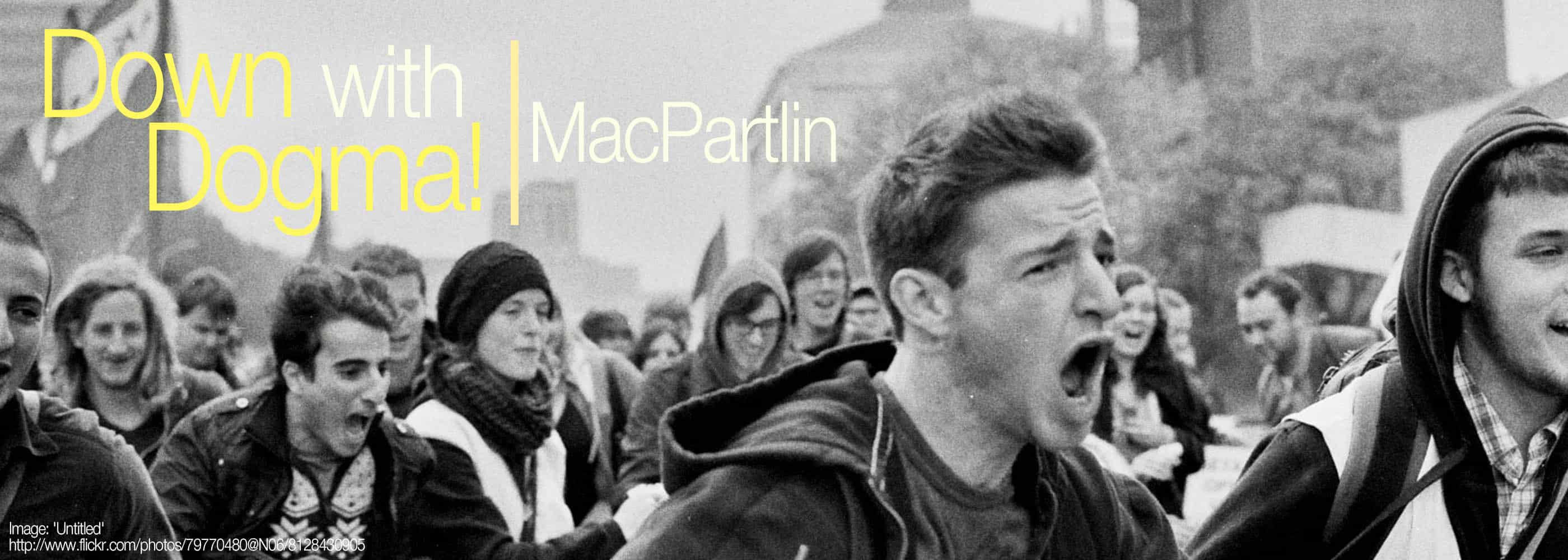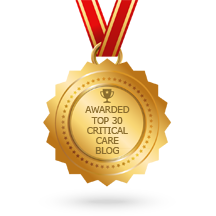 |
Messages from the CICM ASM 2013
Oli and I were at the CICM’s Annual Scientific Meeting in Wellington at the weekend, along with Marrianne Kirrane from the Brisbane ICN, Chris Nickson from Life In The Fast Lane and Todd Fraser from CritIQ. Both Oli and Chris gave talks at the meeting; Oli gave a SMACC-style presentation on neurocritical care iconoclasticism and Chris gave two talks, one on toxicology half-truths and the second on the role of FOAMed (he wants to move away from the term social media) in medical education and training. There were also a number of other online meducators present, including Doug Lynch (@TheTopEnd), David Anderson (@expensivecare), Jeremy Fernando (LITFL and ICN) and Colin Barnes (@barc00), with whom I had a chance to meet up and go for a coffee or a pint.
The theme of the conference was “Down with Dogma” and there were a mix of approaches and strategies to this as the schedule of topics was covered, spanning the full range of evidence and eminence base and of audience opinion.
 |
Wellington toned down it’s windy reputation (dogma?) and the sun shone over its spectacular bay right up to Sunday afternoon. I was well impressed with my first trip to New Zealand’s capital and had a chance to wander along streets such as Cuba Street and Lambton Quay, as well as the length of the waterfront, all of which thrummed with activity amongst the variety of shops, cafes, bars and restaraunts. I was somewhat bemused by the vampires, Captain Americas, samurai and range of 8 – 30 year olds dressed as puppies, pandas and pokemon wandering the streets, until I found out about a Armageddon Expo being held at the Westpac Stadium; then it all made sense. (Take that Minh Le Cong and all the other Force purveyors!)
 |
Here are the take home points that I got from the conference:
- Take the time to examine patients -> The time spent builds trust and if you get good at it you’ll have the diagnosis before the investigations are ordered (Venkatesh)
- Don’t chase numbers for their own sake. Treat the patient. (Bellomo, Myburg, Angus, Wright)
- As long as the catheter is not blocked, tracking the urine output will not help you to fix the oliguria. And giving a fluid bolus won’t make it better, but can make it worse. (Bellomo)
- ARDS: If mild -> spontaneous breathing (+support) may be best. If severe -> early, short term NMB may improve outcome. If P/F ratio <100 on=”” peep=”” 5=”” try=”” a=”” recruitment=”” manouvre=”” but=”” bail=”” out=”” if=”” there=”” is=”” no=”” improvement=”” how=”” high=”” to=”” go=”” individual=”” prone=”” ventilation=”” and=”” you=”” do=”” look=”” at=”” vte=”” pplat=”” they=”” get=”” worse=”” likely=”” be=”” some=”” recruitability=”” freebairn=”” li=””>
- Align administrative resources, financial design and quality improvement to clinical practice, not the other way around (Galler, Angus)
- Trials need to be designed around clear definitions and meaningful patient relevant outcomes (not surrogates). Surrogate measures can be misleading; eg. DECRA -> ICP improved but functional outcome worse (Angus, Natanson)
- Beware of improving mortality at the cost of poor functional outcome (Myburg, Morgan)
- Be watchful for trial misalignment. If the trial protocol requires you to do something you know to be inferior / harmful be suspicious of that trial. The key to identifying trial misalignment is to understand what the standard was/is just before the trial began and the associated outcomes. (Natanson)
- We haven’t perfected it yet but using genomics, proteomics and response phenotypes look like promising trial outcome metrics. (Angus)
- Response phenotypes takes the emphasis off “does the drug work?” and focuses on “who will potentially respond to the intervention?” (Angus)
- Adaptive trial design is an emerging method whereby pre-planned interim analyses with behaviour rules aims to weight recruitment towards what appears to be the most promising intervention, allowing the trial to succeed or fail quickly, thereby reducing cost, time and exposure of patients to harmful/ineffective interventions (Angus)
- Change (work practices, education methods, training processes, demographics, opinions) is inevitable. Adapt. You can let it happen around you or shape how it happens by getting involved. (Nickson)
- Prof John Myburgh has a Twitter account and he ain’t afraid to use it! – @JAMyburgh
The prize for Most Controversial Statement of the Conference is jointly held by Charles Natanson (“EGDT is based on a made up trial”) and Di Stephens (“We should no longer accept dual training in our trainees. Those days are over.”). Take your own stance on those.
I don’t yet know whether the College has plans to release the transcripts of the presentations, though they did last year. However, Oli has made a recording of his presentation which will be out soon on the ICN site, Chris has put resources from his talks available at LITFL and Crit IQ’s Todd Fraser has written summaries of each of the sessions over the 3 days.
As an added bonus, there is a good chance that there will soon be a New Zealand ICN, based in Wellington. If this sounds like something you’d like to be involved with, track down Logan Marriott and let him know.
Oli’s talk: An iconoclastic view of neurocritical care
Chris’ talks: Toxicological myths and half-truths & Social media and the internet: the future of medical education?
Chris has also written his own summary of the conference and put together a series of Storify slides of all of the best tweets, tweeted references and photos from this year’s ASM, which you can view here.
Todd’s Crit-IQ ASM session summaries

























